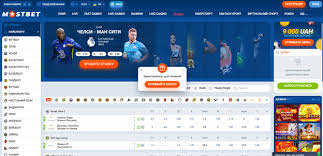
How to Create a High-Converting Website
Creating a high-converting website is essential for any business looking to enhance its online presence and maximize sales. Whether you are building an e-commerce site, a landing page for lead generation, or a blog aimed at monetization, understanding the elements that contribute to a high conversion rate is vital. This guide will provide you with actionable strategies, best practices, and innovative ideas to help you create an engaging and effective online platform. To start your journey, check out this How to Create a High-Converting Casino Landing Page for AZ https://mostbet-kuwait1.com/application for inspiration on building a successful website.
Understanding Conversion Rate
Before diving into strategies for creating a high-converting website, it’s important to understand what a conversion rate is. The conversion rate is the percentage of visitors to your site who take a desired action, such as making a purchase, signing up for a newsletter, or filling out a contact form. For example, if your website receives 100 visitors and 5 make a purchase, your conversion rate is 5%. The goal of any website is to turn as many visitors as possible into customers or leads, making a high conversion rate essential to online success.
Elements of a High-Converting Website
Several key elements contribute to a high-converting website. These include:

- Clear Value Proposition: Your value proposition should clearly communicate what makes your product or service unique and why visitors should choose you over competitors.
- User-Friendly Design: A clean, intuitive design helps visitors navigate your site easily, reducing bounce rates and increasing the chances of conversion.
- Strong Calls to Action (CTAs): CTAs encourage visitors to take action. Use clear, action-oriented language and ensure that CTAs stand out visually on your pages.
- Optimized Content: Quality content that is relevant to your audience will engage visitors and urge them to take action. Use a mix of text, images, and videos to convey information effectively.
- Fast Loading Times: A slow-loading website can frustrate users and lead to high bounce rates. Optimize images, leverage browser caching, and improve server response times.
- Mobile Responsiveness: With a growing number of users accessing the internet via mobile devices, make sure your website is fully responsive and provides a great experience on all screen sizes.
Designing for Conversion
The design of your website plays a significant role in its conversion rate. Here are some design principles to consider:

- Simplicity: Keep your layout clean and uncluttered. Too many elements can overwhelm visitors and distract them from taking action.
- Visual Hierarchy: Use size, color, and placement to create a hierarchy of information. The most important elements, such as CTAs and value propositions, should be the most prominent.
- Color Psychology: Colors evoke emotions and can influence behavior. Choose a color palette that aligns with your brand and encourages action. For example, red is often associated with urgency, while blue conveys trust.
- Consistent Branding: Use consistent logos, fonts, and images throughout your site to establish a strong brand identity that fosters trust and recognition.
Crafting Compelling Content
Content is king when it comes to conversions. Here are some tips for creating compelling content:

- Know Your Audience: Tailor your content to meet the needs and interests of your target audience. Use language that resonates with them and addresses their pain points.
- Provide Value: Your content should provide real value to your visitors, whether it’s through informative articles, engaging blog posts, or helpful how-to guides.
- Use Testimonials and Reviews: Social proof can significantly influence purchasing decisions. Display testimonials, case studies, and reviews to build trust with prospective customers.
- Engaging Visuals: Use images, infographics, and videos to complement your text and keep visitors engaged. Visual content can often communicate information more effectively than text alone.
Testing and Optimizing for Success
Creating a high-converting website is an ongoing process. Here are some practices to ensure ongoing optimization:
- A/B Testing: Test different versions of your website to see what resonates best with your audience. Experiment with elements such as headlines, CTAs, and images to see which variations drive higher conversions.
- Use Analytics: Track visitor behavior using tools like Google Analytics. Analyze data to understand how users interact with your site and identify areas for improvement.
- Gather Feedback: Solicit feedback from users through surveys or direct outreach. Understanding their experiences can provide valuable insights into any obstacles they face.
- Continuous Improvement: The online landscape is constantly changing, so be prepared to adapt your strategies based on emerging trends, technological advancements, and user preferences.
Conclusion
Creating a high-converting website involves a combination of strategic design, compelling content, and continuous optimization. By following the principles outlined in this guide and keeping your audience’s needs at the forefront of your efforts, you can significantly improve your conversion rates and drive success for your online endeavors. Remember, a high-converting website is not a one-time effort but an ongoing process that requires attention and adaptation.